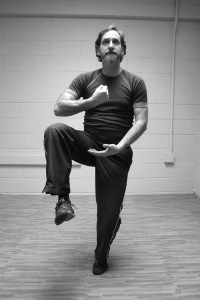There are three basic approaches to teaching that match the basic approaches to enlightenment.
I use the term enlightenment loosely, because I think people ought to lighten up about it. (That is a joke, sort of.)
These approaches to enlightenment could also be understood as the orthodox daoist framing of religious expression. This framing has a universal quality to it because it is easily re-discoverable, not because it is an absolute truth. It is not religion specific but refers more generally to three views of what the human relationship to nature is. None of these three views are exclusive either, in fact there is an experientially based/tested assumption that humans inherently have access to all three.
They are:
1) Wuwei. A non conceptual experience of being/emptiness. Without preference, progress, hierarchy, equality, individuality or community. It can not be framed or limited by words, images, names, or descriptions.
2) Perfection. Tantric enlightenment. Becoming a god. Perfect body mechanics. Superior anything. Sudden enlightenment. Games. Glowing health. Accumulating qi. Perfect circulation. The achievement of effortless skill and technique.
3) Subordination. Making alliances with any form or embodiment of power. Shamanism. Survival strategies. Devotion. Discipline. The gradual approach. Contracts.
__________
This formula is in many of the chapters of the Daodejing. Laozi the author of the Daodejing, keeps coming back to the first one as a natural process of return, like water returning to the sea.
I don't know anyone who has gotten good at martial arts without taking the third view. But I also don't know anyone who has gotten good by exclusive fidelity to the third view. In that sense, I understand practice as a conversation between these three views. They have a way of refreshing each other.
With regard to teaching children I start with the third view because it creates a container for experiencing the first view. Children find it deeply relaxing and satisfying to be given tightly channelled directions, to be surrounded by percussive order and explosive command, to be welcomed into a safe guided challenging total environment. That relaxation leads directly to self-respect and self-acceptance. From that base, they then have the option of choosing the second view, self-directed, self-gratifying, self-disciplined self-improvement.
Adults present a different challenge. My preference is to initiate adults into the first view via a year of standing still practice supplemented by hanging out time. But everyone is different. And more importantly everyone has a unique way of relating to me. So it is my goal as a teacher to re-invent a kind of theatrical temple culture. I want to offer an environment or milieu that students can enter where all three views are available. An environment where dance, games, techniques, solo discipline, learning through doing, immediate feed back, edge experiences, identity challenges, deeply comforting personal retreat technologies, awareness expanding experiences, chaotic containers, and ordered experiments are all simultaneously available. A space where failure is fun. Where performance is a direct way to access the capaciousness of beauty. A space emotionally big enough for both gentle healing and the serious experiential examination of human violence and aggression.
One of the problems I face is the culturally static model of a class and a teacher that we are all accustomed to. For the theatrical temple model to work, individuals have to feel free to experiment and get support for changes in their entire lives.
The hobbiest model is actually fine. It is just that my challenge is to get students to understand that the subject we are working with is the alchemy of all their appetites: sleep, work, play, nutrition, intimacy, social life, risk taking, heroism, reclusiveness, etc. etc. etc....
_______________
Here is my attempt at one of the Daodejing Chapters that presents the three views, Chapter 23:
To seldom speak is to follow the Dao.
A gust of wind can not last all morning,
A downpour can not last all day.
What causes these? Heaven and Earth.
If the actions of Heaven and Earth do not last long, how much less the actions of human beings.
One who cultivates Dao, will experience Dao.
One who cultivates perfection, will experience perfection.
One who cultivates need, will experience need.
Dao, Perfection, and need all have their own fruition.
Trust without a basis is simply faith.
 I'm teaching in North Boulder Park, Monday thru Friday 6:30-9:00 AM for the Summer. In the Fall I may move indoors. The reason we start early is that makes it much easier to do standing meditation. In the language of Daoism, morning is the time of life, it is simply eaisier to do transformitive training because the available Qi is changing from dawn to day. Of course I'm planning to have evening classes too but they have a different character. Morning is the time to establish daily discipline.
I'm teaching in North Boulder Park, Monday thru Friday 6:30-9:00 AM for the Summer. In the Fall I may move indoors. The reason we start early is that makes it much easier to do standing meditation. In the language of Daoism, morning is the time of life, it is simply eaisier to do transformitive training because the available Qi is changing from dawn to day. Of course I'm planning to have evening classes too but they have a different character. Morning is the time to establish daily discipline.


